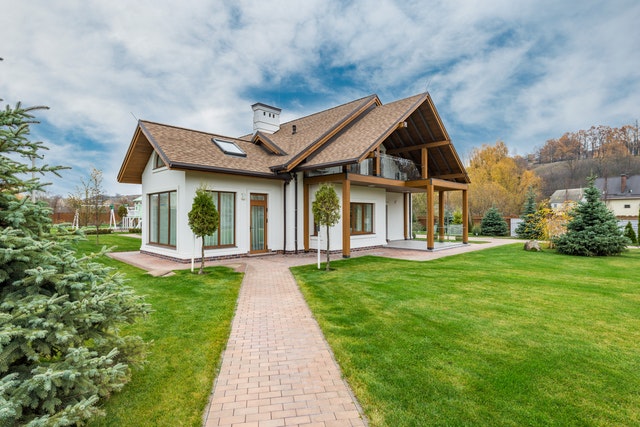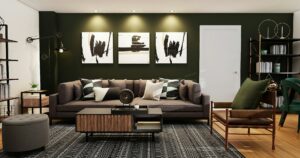
Picture from Pexels
Each structure has its distinct architectural style. Each style has its particular aspects and characteristics that contribute to its individuality. While some traits are connected with a specific architectural style, various roofing materials are identified with a specific trend.
The majority of individuals do not consider roof types until they are faced with the prospect of replacing or building a new one. However, the roof design affects the aesthetics and feel of the home, and if you want to sell, it may even influence the price. What’s more, it may help improve the house’s weather resistance and energy efficiency.
You are undoubtedly aware of the most prevalent kinds of roofs in your region, but you may not be familiar with their names or qualities.
1. Hip Roof
A hip roof has a slope on all four sides that joins the center at a familiar ridge. Consider a hip roof to be two distinct gable roofs attached to a single building. Hip roofs are often seen on wraparound porches, traditional farmhouses, and multi-story constructions. The roof is excellent, making it ideal for places with severe winds. Snow readily glides off and is unlikely to accumulate on top of the roof. Hip roofs are an excellent option for practically any house due to their attractive appearance.
2. The Gambrel Roof
A gambrel roof, which is most often found on barns, is a symmetrical two-sided roof with a shallow top part and a steeper lower slope on either side. This style maximizes the amount of room available in a building’s loft but is often utilized on outhouses and barns owing to its inability to withstand high winds or snowfall.
3. Bonnet
The bonnet roof is a mirror image of the mansard roof. It has two slopes, although the top one is less steep. The bottom one is suspended from the front and rear of the structure and may cover an outdoor area. Although these roof coverings are uncommon in modern homes, they provide several advantages, including additional storage space under the roof, more living space, dormer windows, and overhanging eaves.
When comparing roofing styles, the construction of the bonnet roof is more durable than the gable roof structure. Searching for someone to be able to construct this type of home can be very difficult due to its unpopularity in modern homes, however, you can always reach out to a roofer in Charlottesville, VA by the looks of popularity in the bonnet style within the city of Charlottesville.
4. Awning Roof
A shed roof is made out of a single sloping panel that is sometimes linked to a higher nearby wall. Shed roofs are sometimes called skillion roofs or lean-to roofs. They are often utilized in rustic cottages, storm shelters, and hunting getaways. Shed roofs make it possible to cover porches and patios without reconfiguring the roof’s form. They need few building materials, and they can be erected even by persons with little construction knowledge.
Don’t be afraid to try out a different roofing style when building a custom home. Creating a unique look for your home is important.
5. Mansard
Mansard roofs may have flat or curved sides, but the lower side will always have a higher pitch than the top side. Depending on the home’s design, these covers come in several shapes, including convex, concave, and straight angles. Add large windows to the rooms located in the mansard to provide natural light.
Mansard roofs are more costly than other roofs due to the additional embellishments. You may construct them out of any material, but choose zinc, copper, or wood if you want to increase your home’s value significantly. This kind of roofing is not recommended for homes located in northern regions.
6. A flat roof style
Many mid-century modern architects experimented with flat rooflines, constructing dream houses for Hollywood celebrities and affluent business people. Flat roofs complemented the period’s aesthetic, integrating into the landscape and allowing for expansive open floor designs. Sure dwellings have a small amount of flat surface area, and the remainder of the roof is gable or hip. Additionally, some house expansions have a flat roof to provide additional living space on the second story.
Conclusion
There are several roof types to select from. Not only that but the sheer variety of construction materials available means that the options for roofing are practically limitless. Additionally, depending on the style of siding in your home, your roof selection may vary. Consider the style of your house, the climate, and your budget when creating a design that is right for you.


